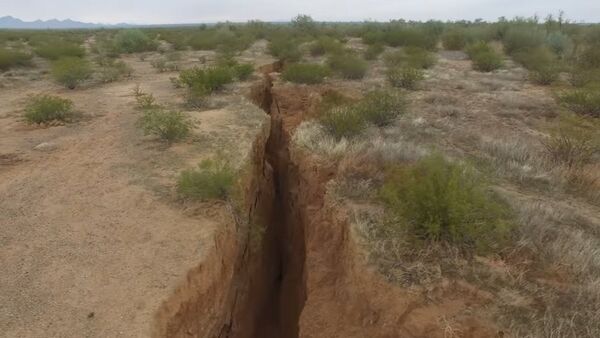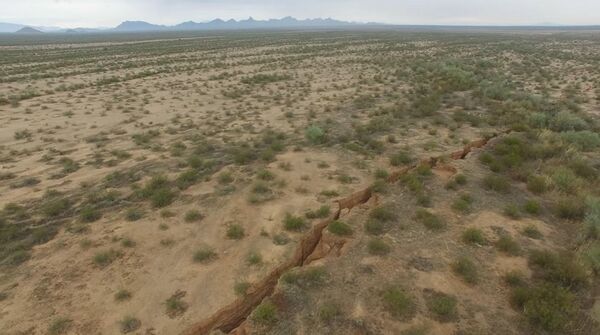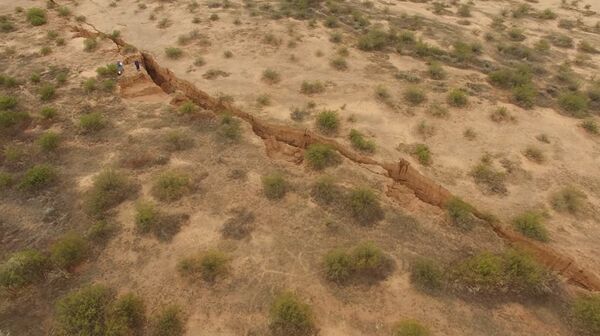AZGS officials said in a statement that the opening first appeared in either 2013 or 2014, before widening significantly in late 2014, following heavy rainfall.
Joe Cook, a geologist with AZGS, told a local news station that an underground crevasse may have been brought to the surface by a 2016 monsoon, widening the crack further. At its widest, the AZGS says, the fissure is 10 feet across and 30 feet deep.

The AZGS said that cracks and fissures commonly form in Arizona's southernmost counties due to the movement of groundwater beneath the surface. This particular fissure, Cook said, was likely formed by farmers pumping water from underground to irrigate their crops.
The loss of the water destabilizes the ground, causing fissures to form.

Chasms similar to the fissure pose a danger to off-road and all-terrain vehicle enthusiasts who might drive into them by mistake, as well as animals.
"There have been examples of cow skeletons in fissures and I've actually helped pull a calf out of a fissure that was stuck in the mud," said Cook.

The newly-discovered fissure is significantly larger than others in the area, and is only 13 miles south of Arizona City and its 10,000 residents. It is also 45 miles from Tucson, Arizona's second largest city.


